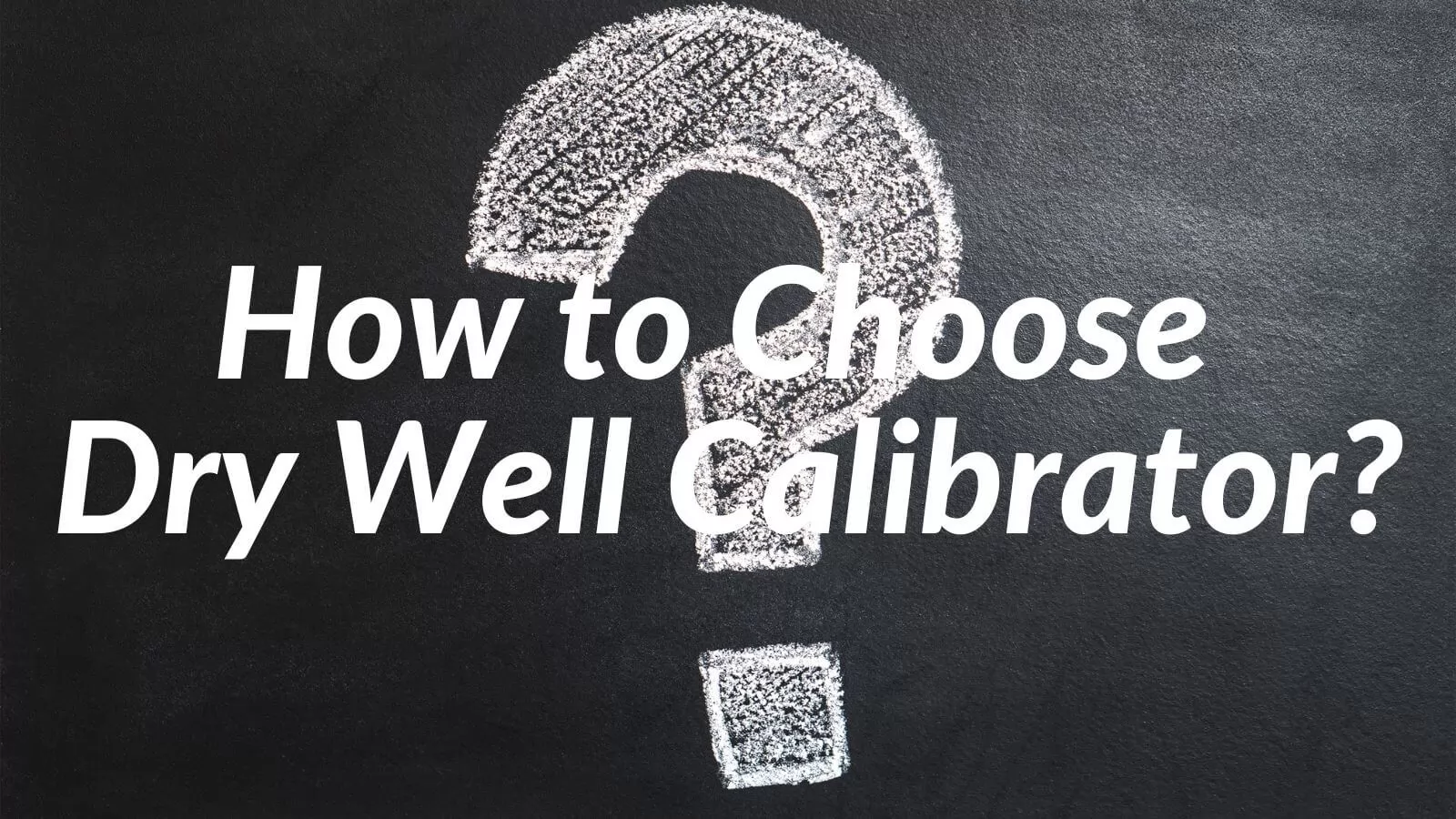
Whether you're involved in temperature-sensitive industries like manufacturing, research, or quality control, having reliable temperature readings is crucial. That's where dry well calibrators come into play.
In this article, we will delve into the realm of dry well calibrators, exploring their definition, considerations, selection criteria, applications, pricing, and types.
1. What is a Dry Well Calibrator?
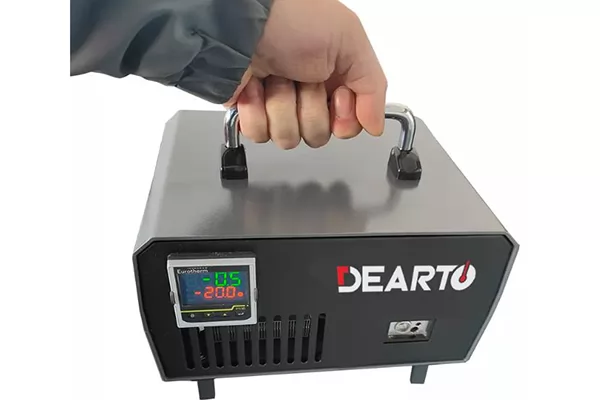
A dry well calibrator is a precision instrument used in various industries for the calibration and verification of temperature sensors and devices. It provides a controlled and stable temperature environment to assess the accuracy and performance of thermometers, probes, transmitters, and other temperature measuring instruments. The primary function of a dry well calibrator is to generate and maintain a specific temperature, allowing technicians to compare and adjust the readings of the devices being calibrated.
Dry well calibrators consist of a metal block or well that can be heated or cooled to reach specific temperature setpoints. The block is typically made of materials with good thermal conductivity, such as aluminum or stainless steel, to ensure efficient and uniform heat transfer. The well is equipped with a heating element and a temperature sensor, enabling precise control over the temperature within the well.
2. Considerations
When it comes to selecting and installing a boiler, there are several important considerations to keep in mind.
2.1 Heating Requirements
Before installing a boiler, it's essential to assess your heating requirements. Consider factors such as the size of your property, the number of rooms you need to heat, and your hot water demand. This evaluation will help determine the heating capacity (measured in British Thermal Units or BTUs) required for your boiler.
2.2 Fuel Type
Boilers can run on various fuel types, including natural gas, propane, oil, or electricity. Each fuel type has its advantages and considerations. Natural gas and propane are popular choices due to their availability and cost-effectiveness, while oil boilers are commonly used in areas without access to a natural gas supply. Electric boilers are an option when other fuel sources are not feasible. Consider your location, energy costs, and availability of fuel types when deciding on the most suitable option for your boiler.
2.3 Boiler Efficiency
Boiler efficiency is a crucial factor to consider as it directly impacts energy consumption and operational costs. Higher efficiency boilers convert a greater percentage of fuel into usable heat, resulting in lower energy bills. Look for boilers with a high Annual Fuel Utilization Efficiency (AFUE) rating, which indicates the percentage of fuel the boiler can convert into heat over a year. Choosing an energy-efficient boiler will not only save you money but also reduce your environmental footprint.
2.4 Boiler Size and Installation Space
The physical size of the boiler and the available installation space in your property should be considered. Boilers come in various sizes, and it's essential to select one that fits within the designated space. Additionally, ensure that the installation area provides adequate clearance for maintenance and repairs, as per manufacturer guidelines and local building codes.
2.5 Venting Requirements
Boilers require proper venting to expel combustion gases safely. The venting options will depend on the type of boiler and fuel being used. Common venting methods include chimney venting, power venting, or direct venting. It's crucial to understand the venting requirements and ensure compliance with local building codes to ensure proper ventilation and safety.
2.6 Professional Installation
Boiler installation is a complex process that requires expertise and knowledge. It is highly recommended to hire a qualified HVAC professional for the installation. Professional installers have the necessary skills to ensure proper sizing, piping, venting, and electrical connections. They will also perform safety checks and ensure the boiler is installed according to industry standards.
3. Selecting the Appropriate Dry Well Calibrator According to the Project
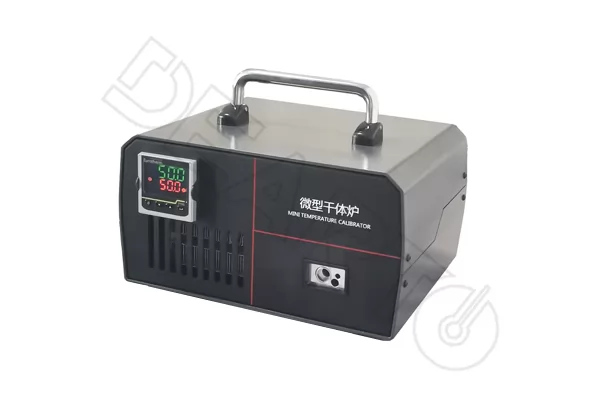
Choosing the right dry well calibrator is crucial to ensure accurate temperature calibration for your specific project or application. Here are the key considerations when selecting a dry well calibrator:
3.1 Identify Calibration Requirements
First, clearly identify the calibration requirements of your project. Determine the temperature range within which you need to calibrate your temperature sensors or devices. Consider the specific types of instruments you will be calibrating and their required accuracy. Understanding your project's unique calibration needs will guide you in selecting a dry well calibrator that meets those requirements.
3.2 Research Available Models
Next, conduct thorough research on the available models of dry well calibrators in the market. Look for reputable manufacturers known for producing reliable and high-quality calibrators. Consider factors such as temperature range, stability, uniformity, and accuracy specifications provided by the manufacturer. Look for user reviews and feedback to gain insights into the performance and reliability of different models.
3.3 Compare Features and Specifications
Compare the features and specifications of different dry well calibrators to narrow down your options. Look for features such as digital temperature controllers, easy-to-read displays, fast heating and cooling times, and multiple well sizes to accommodate various probe sizes. Consider additional features like built-in reference sensors, data logging capabilities, and compatibility with calibration software if they are essential for your project.
3.4 Consider Portability and Size
Evaluate the portability and size requirements for your project. If you need to calibrate temperature sensors in different locations or on-site, consider a portable dry well calibrator that is lightweight and easy to transport. However, if the calibrator will be used in a fixed laboratory setting, a larger and more robust model may be suitable.
3.5 Ease of Use
Choose a dry well calibrator that is user-friendly and easy to operate. Consider features such as intuitive controls, clear user interfaces, and detailed user manuals. Ensure that the calibrator provides straightforward procedures for setting and adjusting temperature, inserting and securing the devices to be calibrated, and accessing calibration results.
4. Application of Dry Well Calibrator
Dry well calibrators have a wide range of applications across various industries where accurate temperature measurement is critical. Here are some common applications of dry well calibrators:
4.1 Temperature Sensor Calibration
One of the primary applications of dry well calibrators is the calibration of temperature sensors. These sensors, such as thermocouples, RTDs (resistance temperature detectors), and thermistors, are widely used in industries like manufacturing, pharmaceuticals, food processing, and HVAC. Dry well calibrators provide a controlled and stable temperature environment, allowing technicians to verify and adjust the accuracy of temperature sensors for reliable and precise temperature measurements.
4.2 Instrumentation Calibration
Dry well calibrators are also utilized for the calibration of various temperature measuring instruments and devices. This includes temperature transmitters, data loggers, temperature controllers, and digital thermometers. By subjecting these instruments to known and stable temperature conditions, technicians can assess their performance and make necessary adjustments to ensure accurate readings.
4.3 Quality Control and Compliance
Dry well calibrators play a vital role in quality control and compliance with industry standards. Industries such as pharmaceuticals, laboratories, and manufacturing sectors often require strict adherence to temperature regulations and accuracy. By calibrating temperature-sensitive instruments and sensors, companies can maintain consistent quality, meet regulatory requirements, and ensure the reliability of their processes and products.
4.4 Research and Development
In research and development environments, dry well calibrators are used to validate and calibrate temperature-sensitive experiments and prototypes. They provide researchers with precise temperature control, enabling accurate data collection and analysis. By ensuring accurate temperature measurement, dry well calibrators contribute to the validity and reproducibility of scientific experiments.
4.5 Field Calibration
Due to their portable nature, some dry well calibrators are designed for field calibration applications. These calibrators are used in industries such as oil and gas, energy, and HVAC, where technicians need to calibrate temperature instruments on-site or in remote locations. Field calibration ensures that temperature readings remain accurate in real-world conditions, preventing errors and optimizing system performance.
4.6 Troubleshooting and Maintenance
Dry well calibrators are valuable tools for troubleshooting and maintenance activities. If a temperature sensor or instrument is displaying inaccurate readings, technicians can use a dry well calibrator to verify and correct any deviations. Regular calibration using dry well calibrators can also identify potential issues before they become critical, improving the overall reliability and efficiency of temperature measurement systems.
5. Price of Dry Well Calibrator
The price of a dry well calibrator can vary depending on several factors, including the brand, model, features, temperature range, accuracy, and additional functionalities. Generally, dry well calibrators are considered specialized equipment, and their prices reflect the precision and reliability they offer. Here are some key factors that influence the price range of dry well calibrators:
• Temperature Range and Accuracy
• Well Size and Capacity
• Additional Features and Functionalities
• Brand and Reputation
• Certification and Compliance
6. Types of Dry Well Calibrators
Dry well calibrators are available in various types, each designed to cater to different calibration needs and temperature ranges. Here are some common types of dry well calibrators:
| Types of Dry Well Calibrators | |
|---|---|
| 1. | Block-Type Dry Well Calibrators |
| 2. | Insert Dry Well Calibrators |
| 3. | Dual-Zone Dry Well Calibrators |
| 4. | Liquid Bath Dry Well Calibrators |
| 5. | Blackbody Dry Well Calibrators |
| 6. | Portable Dry Well Calibrators |
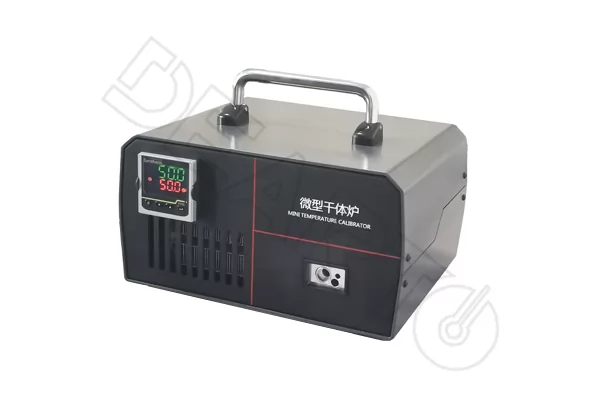
Dry Well Temperature Calibrator Furnace
● Small and light, strong and durable, only weighing about 3kg, convenient on-site measurement calibration.
● Fast calibration, 15 minutes can be stable.
● The thermowell is replaceable and supports a custom jack for a variety of sensors.
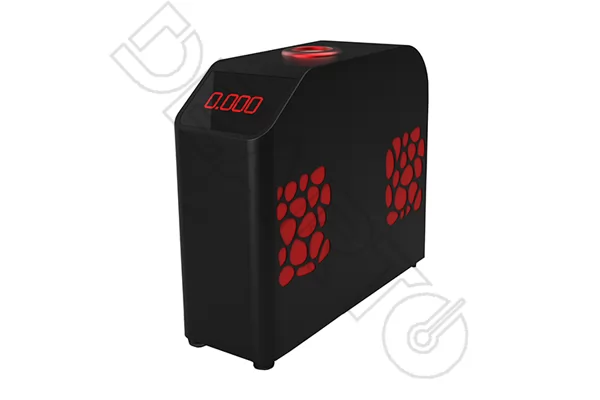
Ice Point Dry Well Calibrator DTBH
● Excellent temperature control performance, fluctuation can be controlled within ±0.02℃/30min
● Resolution up to 0.001℃
● It only takes 15 minutes from room temperature 25℃ to zero degree
Conclusion
In conclusion, a dry well calibrator is a valuable tool used for the calibration of temperature sensors and instruments. It provides a controlled and stable temperature environment, allowing for the verification and adjustment of accuracy in temperature measurement.
When considering a dry well calibrator, there are several important factors to keep in mind. It is crucial to select the appropriate calibrator based on the specific requirements of your project or application. Considerations such as temperature range, accuracy, well size, additional features, brand reputation, and certification play a significant role in choosing the right calibrator.
FAQs (Frequently Asked Questions)
Here are some common questions about dry well calibrators:
1. Why is calibration important for temperature measurement?
Calibration is essential for temperature measurement to ensure accurate and reliable results. Over time, temperature sensors and instruments can drift or deviate from their original calibration. By calibrating them using a dry well calibrator, you can verify and adjust their accuracy, ensuring that temperature measurements are precise and trustworthy.
2. How often should I calibrate my temperature sensors and instruments?
The frequency of calibration depends on various factors such as industry regulations, quality standards, usage conditions, and the criticality of temperature measurements in your application. It is generally recommended to calibrate temperature sensors and instruments at regular intervals, which can range from several months to a year or more. Consult the manufacturer's recommendations and relevant standards for specific guidance.
3. Can I calibrate different types of temperature sensors with a dry well calibrator?
Yes, dry well calibrators are designed to calibrate various types of temperature sensors, including thermocouples, RTDs (resistance temperature detectors), and thermistors. However, it's important to ensure that the calibrator you choose is compatible with the specific sensor types you intend to calibrate.
4. Can I perform on-site calibration using a dry well calibrator?
Yes, there are portable dry well calibrators available specifically designed for on-site calibration. These portable calibrators offer the necessary temperature stability and accuracy while being lightweight and easy to transport. They are suitable for field calibration applications where it may not be feasible to bring the sensors or instruments to a dedicated calibration laboratory.
5. Do I need to send my dry well calibrator for calibration?
Yes, like any calibration equipment, dry well calibrators also require periodic calibration to ensure their accuracy and reliability. It is recommended to send your calibrator to an accredited calibration laboratory or a manufacturer-approved service center for calibration. This helps maintain the traceability and accuracy of the calibrator itself, ensuring its continued effectiveness in calibrating temperature sensors and instruments.



